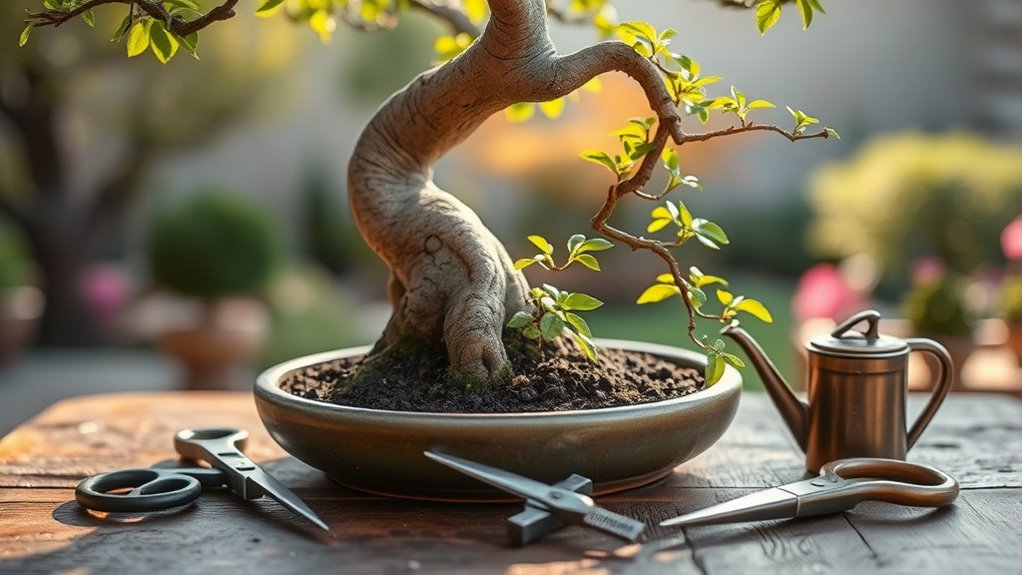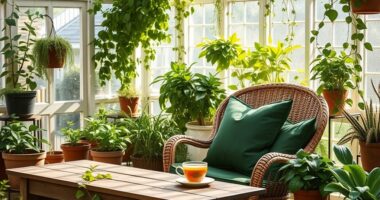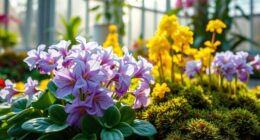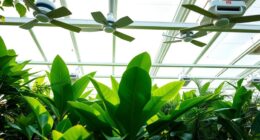I’ve learned that nurturing a bonsai tree takes patience, technique, and the right tools. Start by choosing a species that matches your environment and needs. Regular pruning, proper watering, and ensuring adequate sunlight are key. I recommend tools like the ZELAR Bonsai Set for effective care and the *Bonsai Beginners Bible* for practical tips. Mastering these basics can lead to thriving miniature trees. Stick around to uncover more insights that’ll enhance your bonsai journey!
Key Takeaways
- Choose the right tree species based on your environment and care capability to ensure a thriving bonsai.
- Master proper pruning techniques to shape your bonsai and encourage healthy growth while maintaining its miniature size.
- Adjust watering frequency according to the season and specific plant needs to prevent overwatering or drought stress.
- Utilize quality tools, like those in the ZELAR Bonsai Set, for effective maintenance and care of your bonsai.
- Follow monthly care schedules to stay on track with your bonsai’s specific requirements throughout the year.
The Little Book of Bonsai: An Easy Guide to Caring for Your Bonsai Tree

If you’re a beginner looking to immerse yourself in the world of bonsai, *The Little Book of Bonsai: An Easy Guide to Caring for Your Bonsai Tree* is a perfect choice. The book’s soft colors and appealing design make it inviting, while the organized chapters break down essential topics without overwhelming me. I love the quality photos that showcase stunning bonsai trees, enhancing my understanding of styles and care. Although it doesn’t dive deep into bonsai soil, the practical tips offered are invaluable. Overall, this book is a fantastic resource that inspires me to nurture my miniature tree like a pro.
Best For: Beginners looking to explore and learn about bonsai cultivation in an accessible and visually appealing format.
Pros:
- Well-organized chapters that simplify complex topics for easy understanding.
- High-quality photos that enhance appreciation and understanding of bonsai styles.
- Practical advice and inspiration to motivate new bonsai enthusiasts.
Cons:
- Lacks a dedicated section on bonsai soil, which is essential for healthy growth.
- Limited depth on specific pruning techniques for different tree species.
- Some readers may find it less comprehensive compared to online resources.
ZELAR Bonsai Set (8 Pcs)

The ZELAR Bonsai Set (8 Pcs) is a fantastic choice for both beginners and seasoned bonsai enthusiasts who want a practical and lightweight toolset. Weighing just 5.3 ounces, this compact kit includes three pruning scissors, a folding scissor, a mini rake, two spades, and tweezers—perfect for tending to your miniature trees. Made from high-quality stainless steel, the tools are durable and effective for pruning small stems and accessing tight spaces. With a handy storage bag, it’s easy to transport. It’s rated 4.5 stars by users, making it a great gift for anyone passionate about bonsai care.
Best For: Bonsai enthusiasts and beginners looking for a practical and lightweight toolset for their miniature gardening needs.
Pros:
- Compact and lightweight design for easy transport and storage.
- Made from high-quality stainless steel, ensuring durability and effectiveness.
- Highly rated by users, making it a reliable choice for bonsai care.
Cons:
- Some users have criticized the utility of certain tools in the set.
- May not be suitable for larger or more advanced bonsai care tasks.
- Suggestions for improvements have been noted by users regarding specific tools.
The Only Bonsai Book You’ll Ever Need
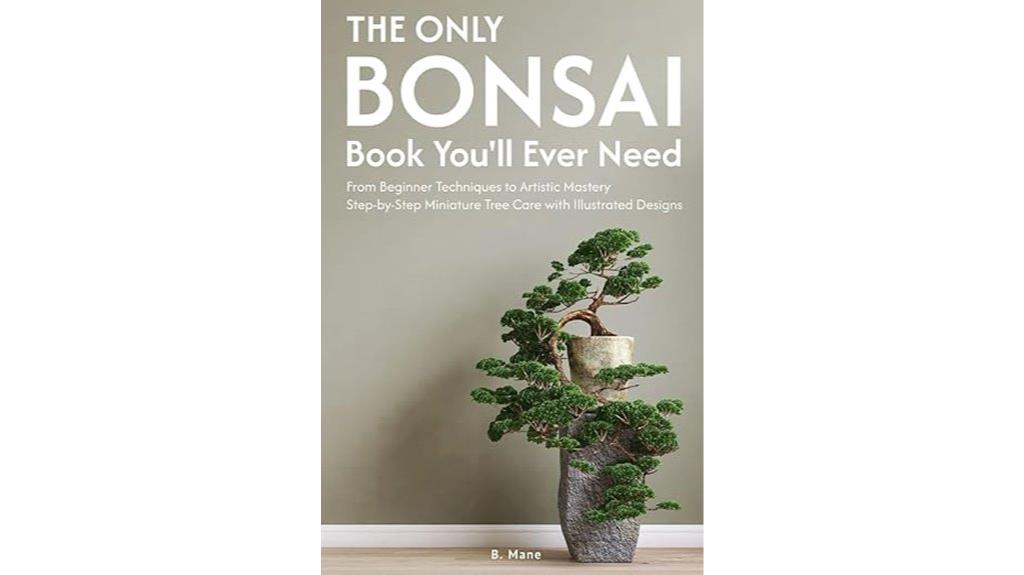
For anyone looking to immerse themselves in the world of bonsai, _The Only Bonsai Book You’ll Ever Need_ stands out as an essential resource. It’s perfect for beginners and experienced enthusiasts alike, with clear, step-by-step techniques and illustrations that make learning enjoyable. The book covers everything from tree selection to potting and placement, ensuring you start confidently. I love the practical care techniques, like watering schedules and pruning tips. Plus, it dives into the artistic aspects and historical context of bonsai, enriching my appreciation for this art form. If you want to deepen your bonsai journey, this book is a must-have!
Best For: Beginners and seasoned bonsai enthusiasts seeking a comprehensive and accessible guide to bonsai care and artistry.
Pros:
- Clear, step-by-step instructions and illustrations make it easy to follow.
- Covers a wide range of topics from tree selection to pest troubleshooting.
- Includes historical and philosophical insights, enriching the overall learning experience.
Cons:
- Some readers desire larger or more detailed photos for better visual guidance.
- The book may not delve deeply enough into advanced techniques for seasoned practitioners.
- Limited to bonsai care; readers seeking broader gardening information may need additional resources.
Bonsai (101 Essential Tips)

Bonsai (101 Essential Tips) serves as an excellent entry point for anyone enthusiastic to explore the world of bonsai gardening. This compact guide is packed with stunning photographs and practical advice for beginners like us. It covers everything from selecting the right plants to essential design principles and various bonsai styles. I love how it includes year-round color suggestions and propagation methods, making it easy to nurture our miniature trees. While some advanced practitioners might find it basic, I appreciate its straightforward approach and solid foundational knowledge. At around $5, it’s a fantastic value for budding bonsai enthusiasts.
Best For: Beginners interested in exploring the art of bonsai gardening with practical tips and visual guidance.
Pros:
- Stunning photographs that enhance the learning experience and inspire creativity.
- Compact and easy-to-read format makes it accessible for new enthusiasts without overwhelming details.
- Affordable price point at around $5, offering great value for foundational knowledge.
Cons:
- May be too basic for intermediate or advanced bonsai practitioners seeking in-depth information.
- Lacks detailed textual explanations, which might leave more experienced users wanting.
- Some readers might find the scope limited, focusing primarily on beginner-level topics.
The Bonsai Beginners Bible
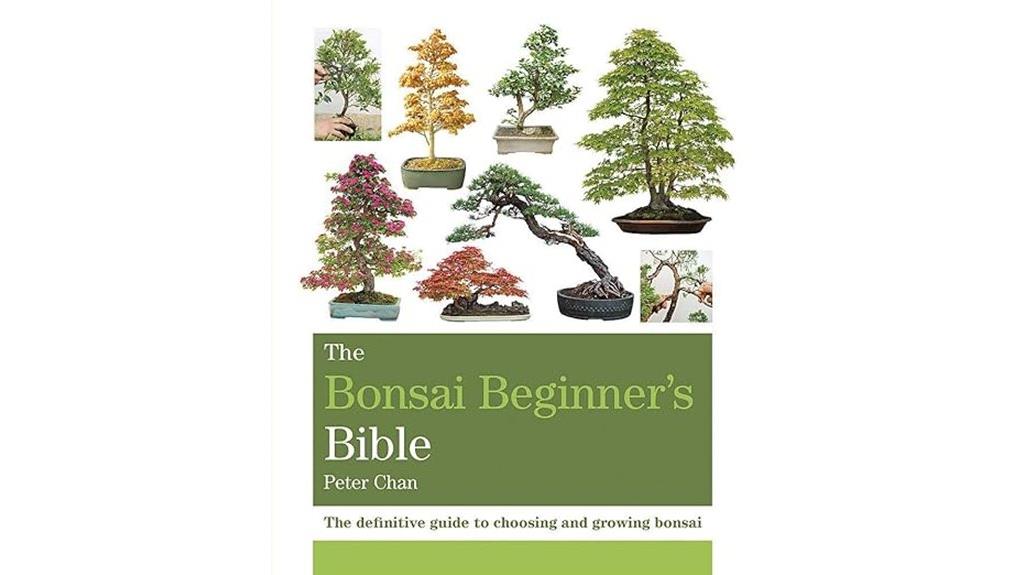
If you’re new to bonsai or looking to deepen your understanding, the “Bonsai Beginners Bible” is an invaluable resource. This guide offers clear instructions on selecting plants, their care, and the minimal tools you’ll need. With over 100 species detailed across double-page spreads, I found the illustrations helpful for grasping each tree’s unique needs, from sunlight to watering. While it lacks specifics on advanced techniques or plant toxicity, it’s a solid starting point. I recommend pairing it with local bonsai groups for a more thorough learning experience. Overall, it’s a fantastic foundation for any aspiring bonsai enthusiast.
Best For: Beginners and bonsai enthusiasts looking for a foundational guide to bonsai care and species information.
Pros:
- Comprehensive coverage of over 100 bonsai species with clear care instructions.
- Beautiful illustrations and photographs that enhance understanding and appreciation.
- User-friendly layout that makes critical information easily accessible.
Cons:
- Lacks detailed information on advanced techniques and styles.
- Omits important information regarding plant toxicity, which may be a concern for pet owners or families with children.
- Recommended to supplement with local bonsai groups for deeper knowledge.
Bonsai Outlet Training Pots with Humidity Trays (Set of 3)
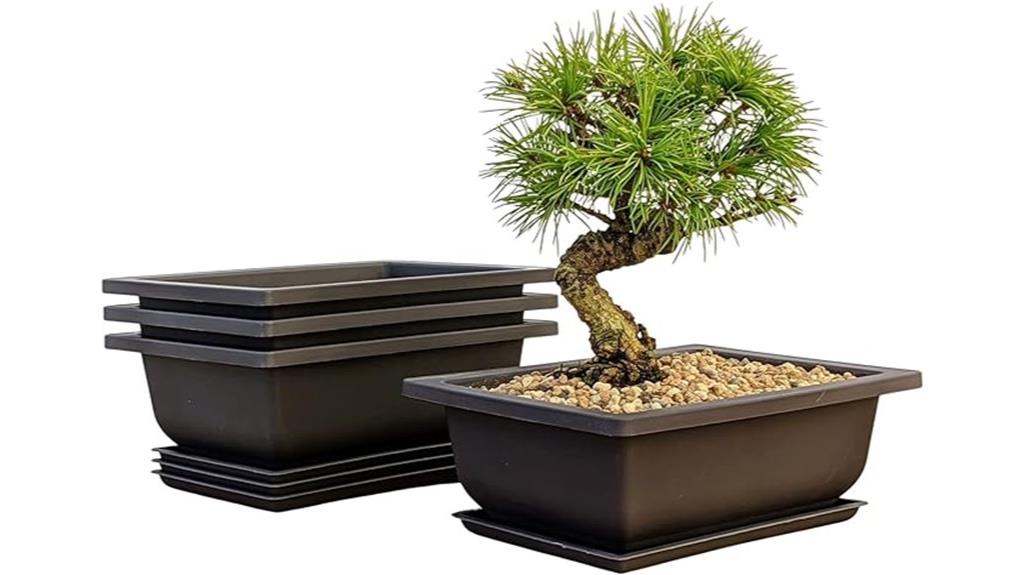
Looking for the perfect pots to nurture your bonsai trees? I found the Bonsai Outlet Training Pots with Humidity Trays, and they’re a game changer! Each pot is made from durable, shatter-proof poly-resin, ensuring they withstand extreme temperatures. The built-in drainage system keeps your soil intact while the humidity trays help manage moisture—essential for preventing root rot. Sized at 6 x 4 x 2.5 inches, they’re perfect for bonsai in training, and I love how they stack for easy storage. Plus, with a solid rating of 4.3 stars from over 3,000 reviews, you can’t go wrong with these sturdy pots!
Best For: Bonsai enthusiasts looking for durable and effective training pots to nurture their plants.
Pros:
- Durable Material: Made from shatter-proof poly-resin that withstands extreme temperatures.
- Effective Drainage: Built-in mesh and holes prevent soil loss while managing moisture levels.
- Stackable Design: Easy to store and move, making them convenient for plant care.
Cons:
- Size Limitations: Some users may find the pots smaller than expected for certain plants.
- Damage Reports: There have been occasional complaints regarding damage upon arrival.
- Potential Overkill for Some Plants: While ideal for bonsai, they may be more than needed for simpler houseplants.
Bonsai Book for Beginners: Step by Step Guide

For those enthusiastic to explore the art of bonsai without feeling overwhelmed, the “Bonsai Book for Beginners: Step by Step Guide” is an excellent choice. It covers everything from planting to pest control, making it perfect for newbies like me. I appreciated the detailed sections on different bonsai types and maintenance, though I wished for more visuals to clarify the techniques. Some parts felt repetitive, but the author’s expertise shines through. Just keep in mind, it’s a solid read before diving into bonsai ownership, so you understand the commitment involved. Happy reading and growing!
Best For: Beginners exploring bonsai as a new hobby, particularly retirees with time to invest in learning.
Pros:
- Comprehensive coverage of bonsai planting, care, and maintenance.
- Author’s expertise provides valuable insights into the art of bonsai.
- Serves as a useful preliminary read before committing to bonsai ownership.
Cons:
- Lacks sufficient visual aids, such as photos and diagrams, to enhance understanding.
- Some content may feel repetitive and disorganized, affecting clarity.
- Extensive care requirements might overwhelm new practitioners.
Bonsai Tools Kit 20 Pcs Garden Tools Set for Beginners
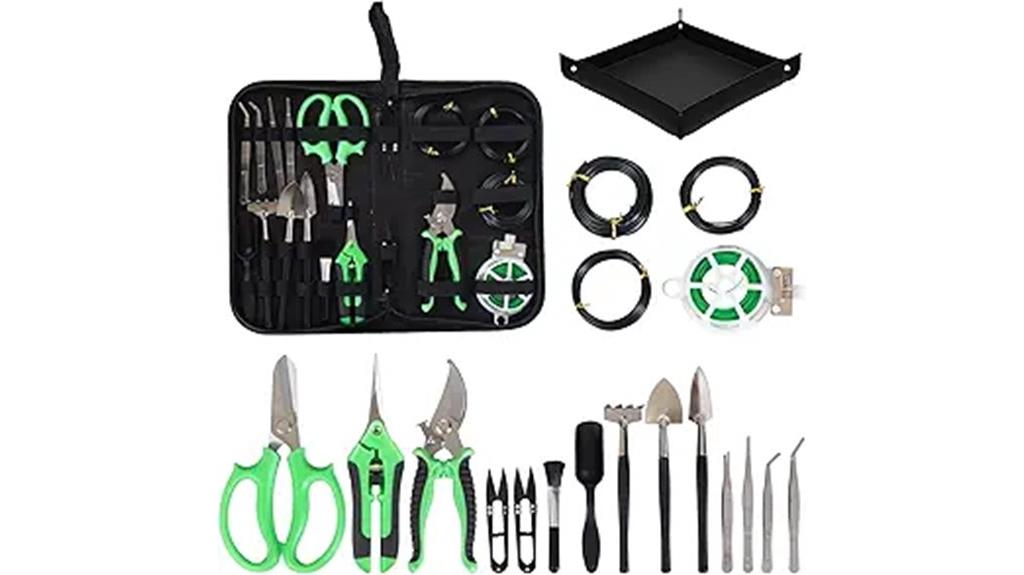
The Bonsai Tools Kit, featuring an extensive 20-piece set, is perfect for beginners enthusiastic to plunge into the world of bonsai care. It includes everything I need for trimming, shaping, and maintaining my miniature trees. The durable stainless steel pruning shears and various small tools make every task easy and enjoyable. Plus, the repotting mat helps keep my workspace clean. I appreciate the thoughtful organization in the PU leather bag, which makes it a great gift for fellow gardening enthusiasts. Overall, this kit offers incredible value and versatility, making it my go-to toolset for bonsai and indoor gardening.
Best For: Beginners looking to start their bonsai and indoor gardening journey with a comprehensive set of essential tools.
Pros:
- High-quality stainless steel and aluminum tools ensure durability and effectiveness.
- The kit includes a variety of tools, catering to diverse gardening tasks and plant types.
- Thoughtfully organized in a PU leather bag, making it a great gift option for plant enthusiasts.
Cons:
- The size of the tools may not be suitable for larger hands or extensive gardening tasks.
- Some users may find the number of tools overwhelming if they are just starting out.
- The repotting mat, while useful, may require additional space for setup.
MoHern Bonsai Wire Tool Kit (6 Sizes, 152 Feet)
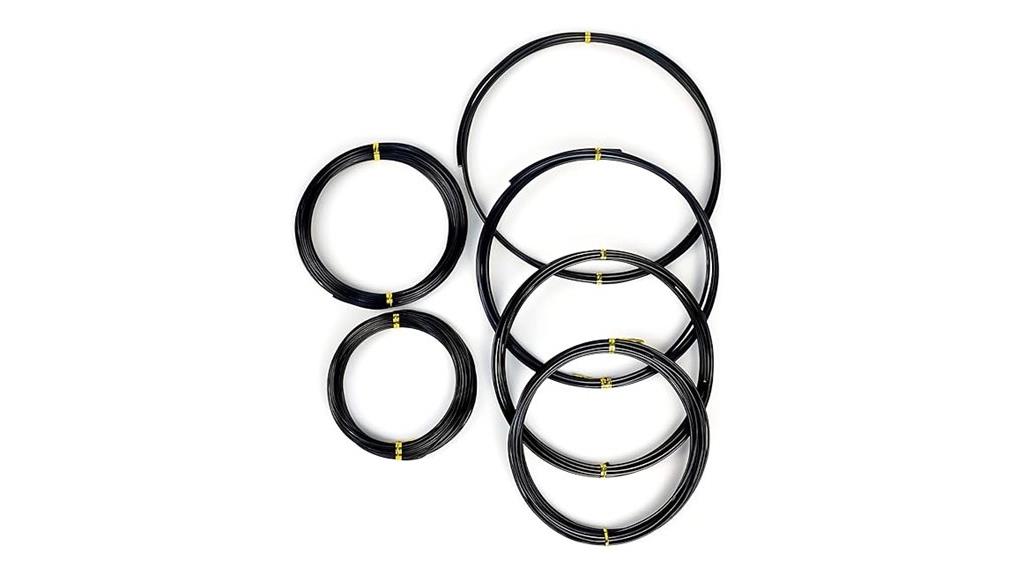
Choosing the right tools is essential for nurturing your bonsai, and the MoHern Bonsai Wire Tool Kit stands out with its six sizes of high-quality black aluminum wire. With 152 feet divided into six rolls, ranging from 1mm to 4mm, I find this kit perfect for various bonsai training needs. The wire’s flexibility makes it easy to mold by hand, and I appreciate how effortlessly it cuts with my wire cutters. Plus, it’s great for other crafts, too! Whether you’re a beginner or more experienced, this kit offers fantastic value and versatility for any bonsai enthusiast.
Best For: Beginners and experienced bonsai enthusiasts looking for a versatile wire tool kit for training and crafting.
Pros:
- High-quality black aluminum wire that is rust-resistant and durable.
- Offers six different sizes (1mm to 4mm) for various bonsai needs and projects.
- Flexible and easy to mold by hand, making it suitable for different crafting applications.
Cons:
- Some users may prefer additional wire in higher gauges for specific projects.
- The total weight of 50 grams per roll may not be sufficient for larger bonsai projects.
- Limited to small to medium applications, which may not meet all user requirements.
Bonsai for Beginners: The Essential Guide to Growing and Caring for a Bonsai Tree

If you’re new to the world of bonsai, “Bonsai for Beginners” is your go-to guide for mastering the art of growing and caring for these enchanting trees. This book offers step-by-step instructions, covering everything from selecting your first bonsai to understanding specific species needs. I found its clear explanations on pruning and seasonal care invaluable. It also discusses the essential tools you’ll need, helping you feel equipped to start your journey. Many readers, including myself, have experienced stress relief and fulfillment through bonsai cultivation, making this guide a perfect companion for anyone keen to nurture these delicate plants.
Best For: Beginners who want to learn the art of bonsai cultivation and care.
Pros:
- Clear and detailed explanations make it easy for newcomers to understand bonsai care.
- Step-by-step instructions help alleviate fears and build confidence in growing bonsai.
- Provides insights into the stress-relief benefits and fulfillment associated with bonsai cultivation.
Cons:
- May require additional research on specific tree species for optimal care.
- Some readers might find the initial investment in tools and equipment daunting.
- Limited advanced techniques for experienced bonsai enthusiasts looking for more in-depth information.
Introduction to Bonsai: The Complete Illustrated Guide for Beginners
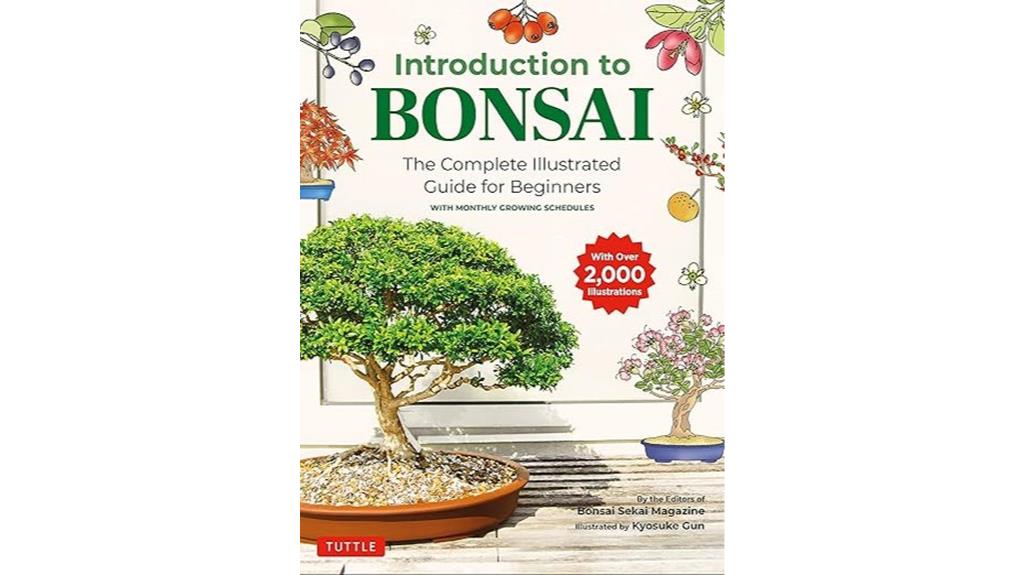
For anyone enthusiastic to plunge into the world of bonsai, “Introduction to Bonsai: The Complete Illustrated Guide for Beginners” stands out as an exceptional resource. I highly recommend it, whether you’re just starting or already experienced. With over 2,000 illustrations, it makes understanding care instructions easier. The detailed monthly care schedules are invaluable, although it lacks thorough seed propagation guidance. I found it particularly helpful in identifying mistakes, though some beginners may feel overwhelmed by the information. Overall, it’s perfect for enhancing your bonsai knowledge, but consider seeking additional resources if you’re starting from scratch with seeds.
Best For: This guide is best for both beginners eager to learn the basics of bonsai and experienced artists looking to enhance their knowledge.
Pros:
- Contains over 2,000 clear illustrations that aid in understanding care instructions.
- Provides detailed monthly care schedules for various bonsai species.
- Positive feedback on easy-to-understand language and clear explanations.
Cons:
- Lacks comprehensive instructions for propagating bonsai from seed.
- Some beginners may find the information overwhelming and excessive.
- May require additional resources for complete novices starting with seeds.
Anodized Aluminum Bonsai Training Wire Starter Set (5 Sizes)

The Anodized Aluminum Bonsai Training Wire Starter Set is perfect for both beginners and seasoned bonsai enthusiasts looking to shape their trees with precision. This set includes five sizes, from 1.0mm to 3.0mm, totaling 147 feet of wire—enough for about ten small trees. I appreciate how easy the anodized aluminum is to bend, making it ideal for delicate shaping. Just be cautious about leaving the wire on too long, as it can leave marks on fast-growing branches. The drawstring canvas bag makes storage convenient, and the variety of colors adds a nice touch to my bonsai toolkit!
Best For: Beginners and experienced bonsai artists looking for a versatile and easy-to-use training wire set for shaping small bonsai trees.
Pros:
- Easy to bend anodized aluminum wire suitable for delicate shaping.
- Comes in a convenient drawstring canvas bag for easy storage and portability.
- Variety of sizes and colors allows for flexibility in working with different branch thicknesses.
Cons:
- Leaving the wire on too long can leave unattractive marks on fast-growing branches.
- Some users find the wire coating too slick for gripping.
- Quantity of certain sizes may not be balanced, leading to potential repurchase concerns.
Indoor Bonsai for Beginners: Selection · Care · Training
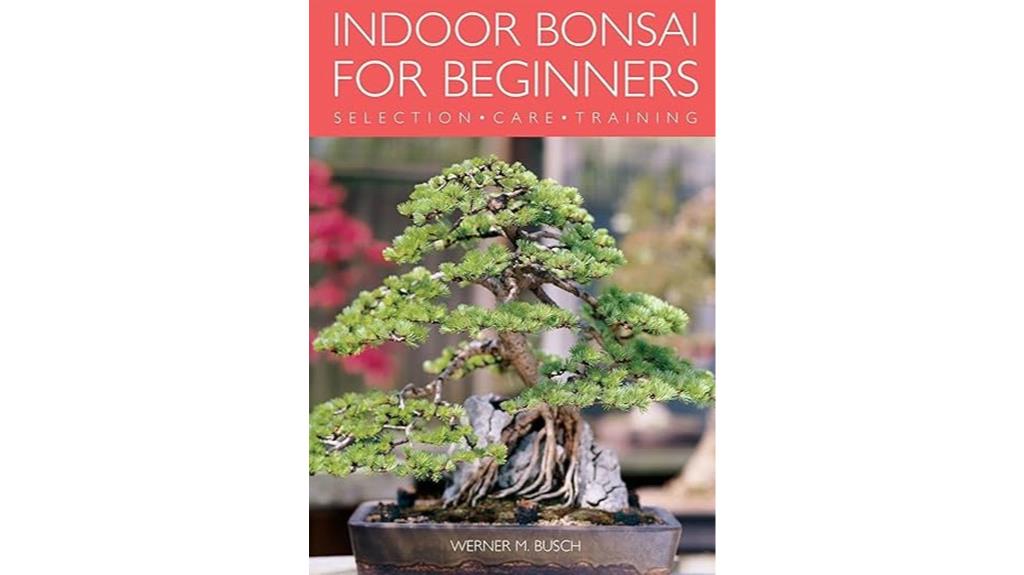
Bonsai care isn’t just for seasoned gardeners; it’s perfect for anyone enthusiastic to immerse themselves in this rewarding hobby. “Indoor Bonsai for Beginners” is my go-to resource, filled with stunning pictures and clear instructions. The first half covers essential techniques like styling and pruning, while the second half highlights popular species and their care needs. It even includes an A to Z section to help you pick suitable plants. While it may not cater to total novices, it inspires and guides me to expand my collection. Immerse yourself in this fascinating world, and watch your miniature tree thrive!
Best For: Beginners and intermediate bonsai enthusiasts looking to enhance their gardening skills and expand their plant collections.
Pros:
- Provides clear and concise instructions along with beautiful illustrations, making it easy to understand.
- Covers essential techniques and care requirements for popular bonsai species.
- Includes a helpful A to Z section for selecting suitable plants based on expertise levels.
Cons:
- May not provide enough detailed guidance for total beginners needing step-by-step instructions.
- Lacks information on starting bonsai from seeds, which some readers may find limiting.
- Does not address common pet-related issues, such as preventing cats from urinating on bonsai trees.
Juniper Bonsai Care Guide
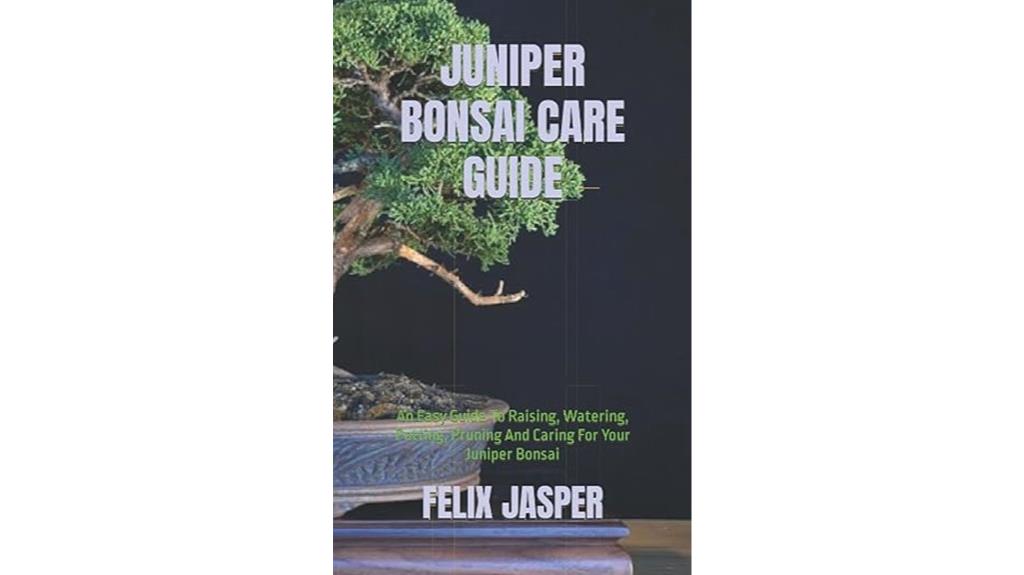
If you’re just starting your journey into bonsai cultivation, the “Juniper Bonsai Care Guide” may seem appealing due to its beginner-friendly approach. However, I found it quite disappointing. The book, while easy to read with its large font, lacks depth and practical advice. It doesn’t provide actionable “how-to” instructions, leaving you with only generalized information. Many readers, including myself, felt it didn’t deliver useful insights, making it feel like a waste of money. I recommend seeking more thorough resources to truly nurture your juniper bonsai. There are definitely better options out there that can guide you effectively.
Best For: Beginners who are looking for a simple introduction to bonsai cultivation but may need more comprehensive resources.
Pros:
- Large font makes it accessible for readers with visual impairments.
- Provides a basic overview of bonsai care suitable for complete novices.
- Compact size makes it easy to carry around for quick reference.
Cons:
- Lacks depth and practical “how-to” guidance for effective bonsai care.
- Content is criticized for being barely readable and lacking clarity.
- Considered a waste of money compared to more informative reference books available.
Factors to Consider When Choosing Bonsai Care
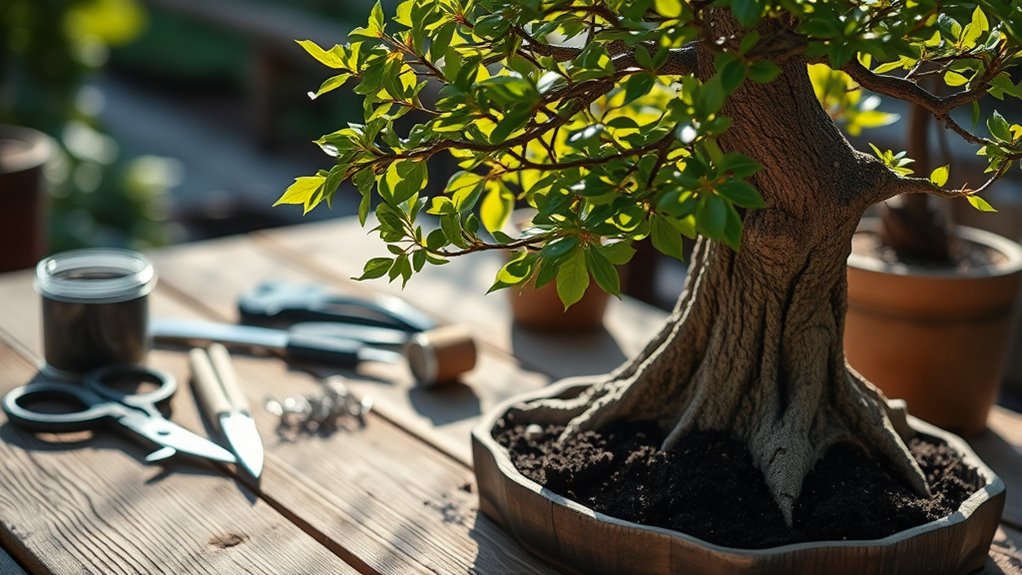
When I think about caring for bonsai, several key factors come to mind. Choosing the right tree species, understanding soil quality, and mastering pruning techniques are all essential. Plus, I can’t overlook the importance of watering frequency and the proper placement for light exposure.
Tree Species Selection
Choosing the right tree species for your bonsai can greatly impact its care and growth. I always consider the climate and environment since different species have unique temperature and humidity needs. Understanding each species’ specific care requirements is essential, including light exposure, watering frequency, and soil preferences. For instance, the Fukien tea and Japanese maple offer distinct aesthetic qualities and styling options. I also think about a tree’s growth habits—whether it needs regular pruning or can grow more freely—because this influences my maintenance strategies. Plus, researching the Latin botanical names helps me identify the right care techniques, ensuring that I don’t apply traditional practices that may not fit every species. Making informed choices sets me up for success!
Soil Quality Importance
Understanding the importance of soil quality is essential for any bonsai enthusiast. The right soil mix affects water retention, drainage, and aeration, all fundamental for healthy root growth. I always choose a blend of organic and inorganic materials, like akadama, pumice, or lava rock, which supplies nutrients while ensuring proper structure. It’s critical to use soil that retains moisture without getting waterlogged, as this helps prevent root rot, a common issue. I also keep an eye on the pH level, aiming for a slightly acidic to neutral range (6.0 to 7.0) for most species. Regularly checking and replacing the soil every couple of years rejuvenates nutrients and improves drainage, supporting my bonsai’s longevity.
Pruning Techniques Overview
Pruning techniques play an essential role in my bonsai care routine, as they not only shape the tree but also promote its overall health. I focus on two main types: structural pruning, which helps define the shape, and maintenance pruning, which enhances foliage density. Timing is critical; many species thrive with spring pruning just before the growing season. I make sure my tools are sharp and clean to avoid damaging branches and reduce the risk of disease. Regular pruning improves light penetration and air circulation, contributing to my bonsai’s liveliness. By mastering these techniques, I can nurture my miniature tree effectively, promoting robust growth and a beautiful shape that stands out.
Watering Frequency Guidelines
While I’m caring for my bonsai, I always keep in mind that watering frequency is crucial for its health. The right schedule depends on several factors, like the species, pot size, soil type, and the environmental conditions around my tree. Typically, I water when the topsoil feels dry, which can vary from daily to weekly, especially during the active growing season in spring and summer. I’ve learned that overwatering can lead to root rot, while underwatering stresses the tree. I also consider whether my bonsai is indoors or outdoors, as indoor trees generally need more frequent watering. Seasonal changes play a role too, so I adjust my routine as needed throughout the year.
Light and Placement Factors
Choosing the right light and placement for your bonsai is fundamental for its well-being. The position of your tree directly impacts its access to natural light, which is essential for photosynthesis and overall health. Different bonsai species have unique light needs; some thrive in direct sunlight while others prefer partial shade. It’s important to research your specific tree’s requirements. If you’re keeping your bonsai indoors, aim for bright, indirect light for several hours daily, and consider supplemental grow lights in low-light conditions, especially in winter. Placing your bonsai near a window maximizes light exposure, but avoid extreme temperatures or drafts. Finally, regularly rotating the tree guarantees even growth and prevents leaning towards the light source, promoting a balanced appearance.
Frequently Asked Questions
How Often Should I Repot My Bonsai Tree?
I usually repot my bonsai tree every two to three years, depending on its growth. If I notice roots crowding the pot or the soil breaking down, it’s time for a change. Spring is my favorite season to do this, as it encourages new growth. I always make sure to use fresh soil and trim the roots slightly to keep the tree healthy. It’s a rewarding process that keeps my bonsai thriving!
Can I Use Regular Potting Soil for Bonsai?
Using regular potting soil for bonsai is like trying to fit a square peg in a round hole. While it might seem convenient, it can suffocate those delicate roots. I’ve learned the hard way that bonsai thrive in a well-draining mix, which allows air and moisture to reach their roots. I recommend using a specialized soil blend instead. It’s worth the effort to keep your miniature tree healthy and happy!
What Is the Best Indoor Temperature for Bonsai?
I’ve found that the best indoor temperature for bonsai typically ranges between 60°F to 75°F (15°C to 24°C). Keeping my bonsai within this range helps them thrive. I make sure to avoid drastic temperature fluctuations, as they can stress the tree. If you notice your bonsai struggling, check the room temperature and make adjustments. Remember, each species might have specific needs, so it’s good to research your particular tree type too!
How Do I Know if My Bonsai Needs Water?
When I first started caring for my bonsai, it felt like deciphering a secret language. To know if your bonsai needs water, I check the soil moisture by sticking my finger about an inch deep. If it feels dry, it’s time to water. I also look for drooping leaves, which signal thirst. Trust your instincts, and soon, you’ll develop a rhythm in your bonsai care that feels almost intuitive.
What Pests Should I Watch Out for With Bonsai?
I’ve found that keeping an eye out for pests is essential in bonsai care. Aphids, spider mites, and scale insects can wreak havoc on your tree. I always check the undersides of leaves and the trunk for any signs of infestation. If I spot any, I act quickly with insecticidal soap or neem oil. Staying vigilant has helped me keep my bonsai healthy and thriving, so don’t underestimate these tiny threats!
Conclusion
To summarize, cultivating a fascinating bonsai can be a charming challenge. By following these carefully curated tips, you’ll not only nurture your miniature masterpiece but also foster a fulfilling friendship with nature. Remember, patience and practice pave the path to perfection. So, grab your tools, embrace the enchanting world of bonsai, and let your creativity flourish! With each snip and twist, you’re crafting a living legacy that’ll bring joy for years to come. Happy bonsai-ing!
